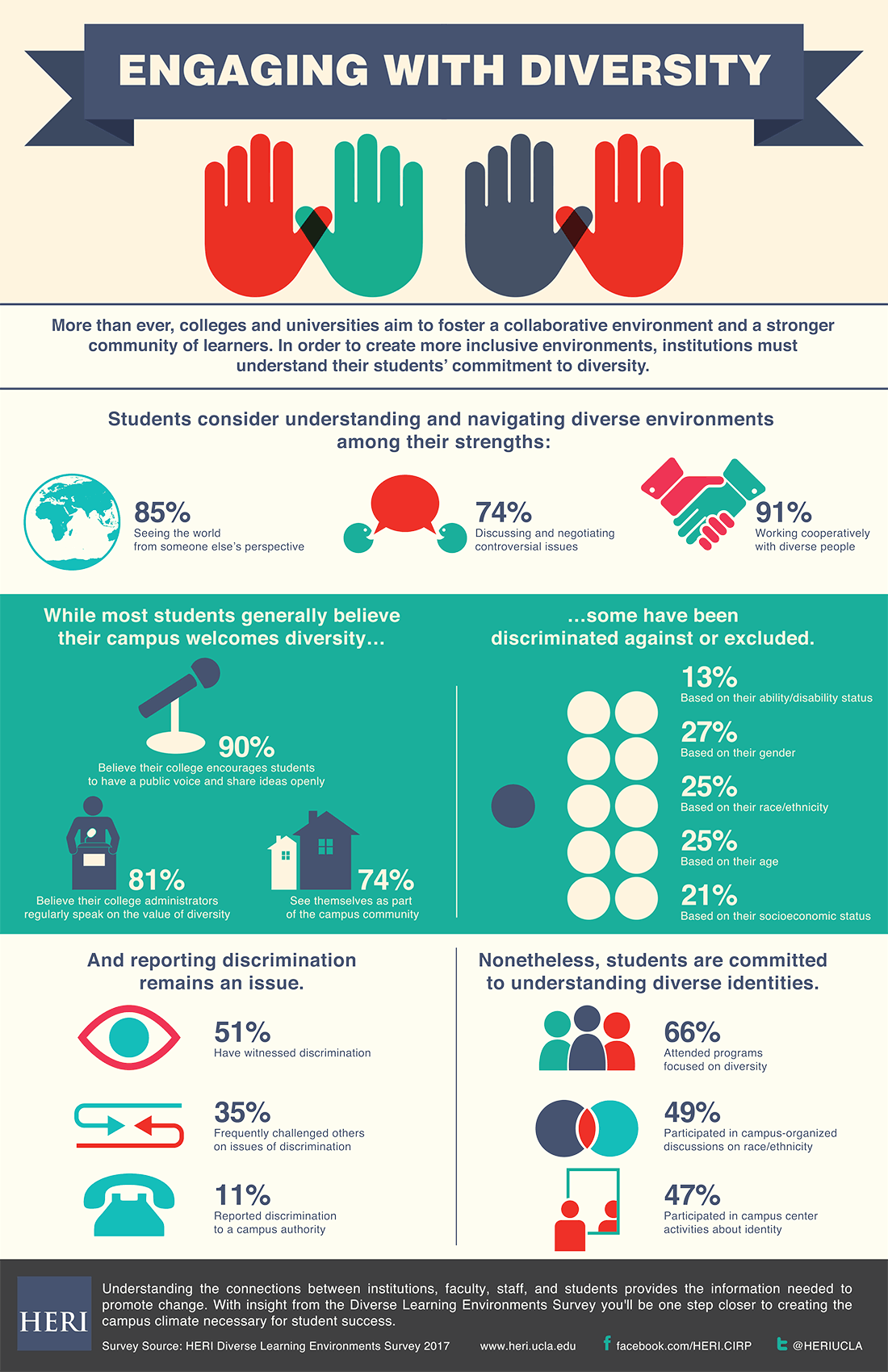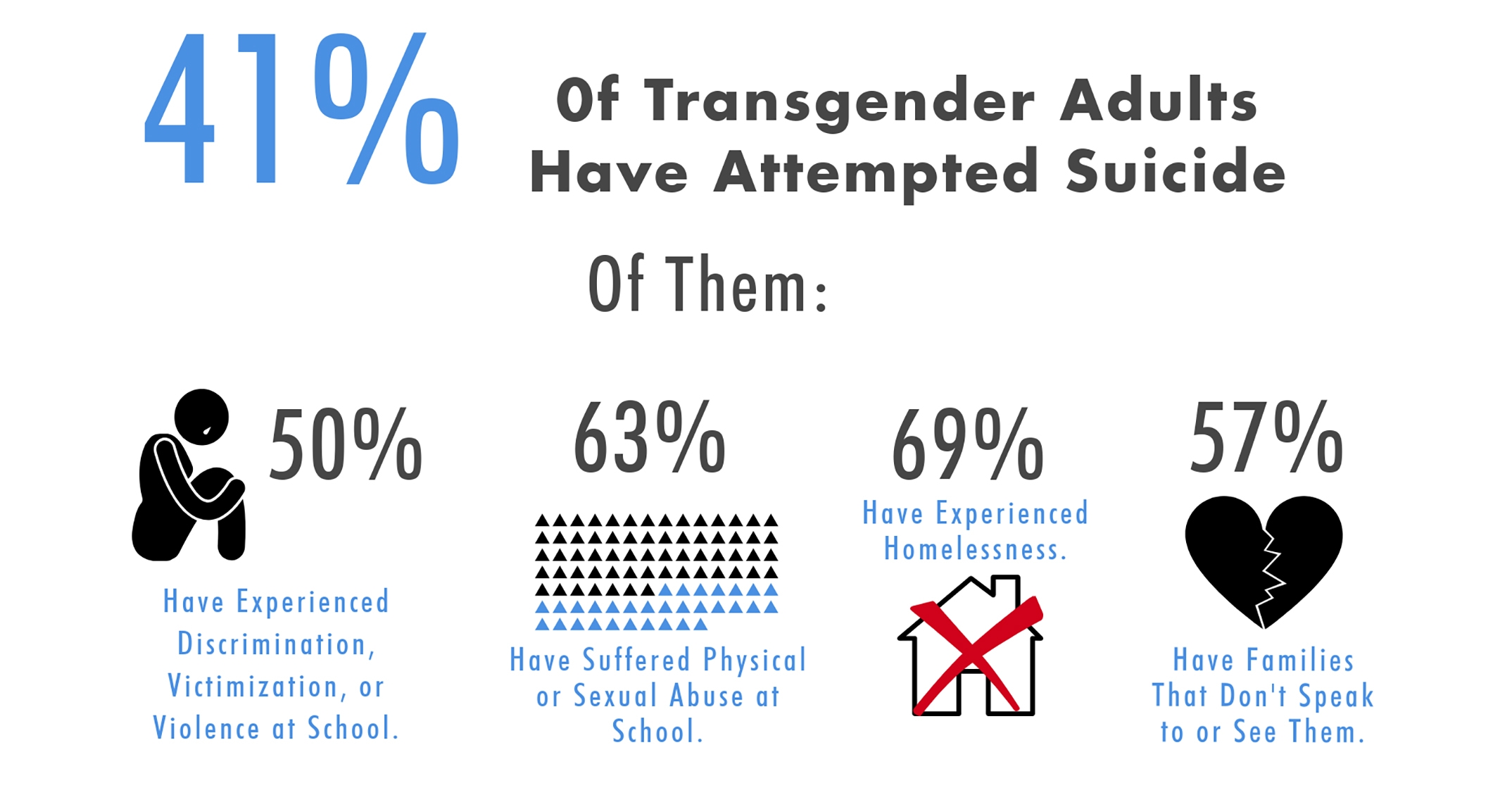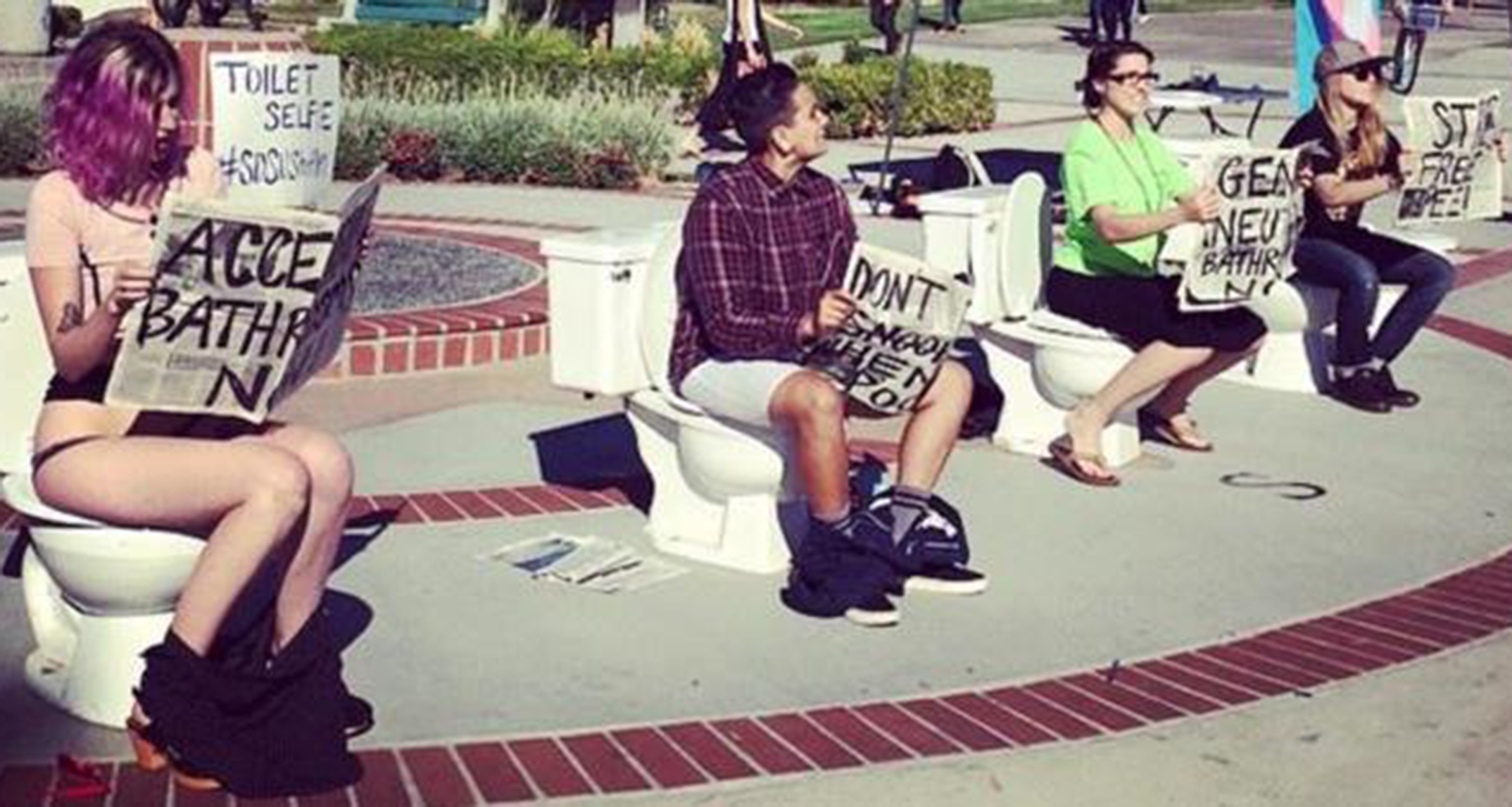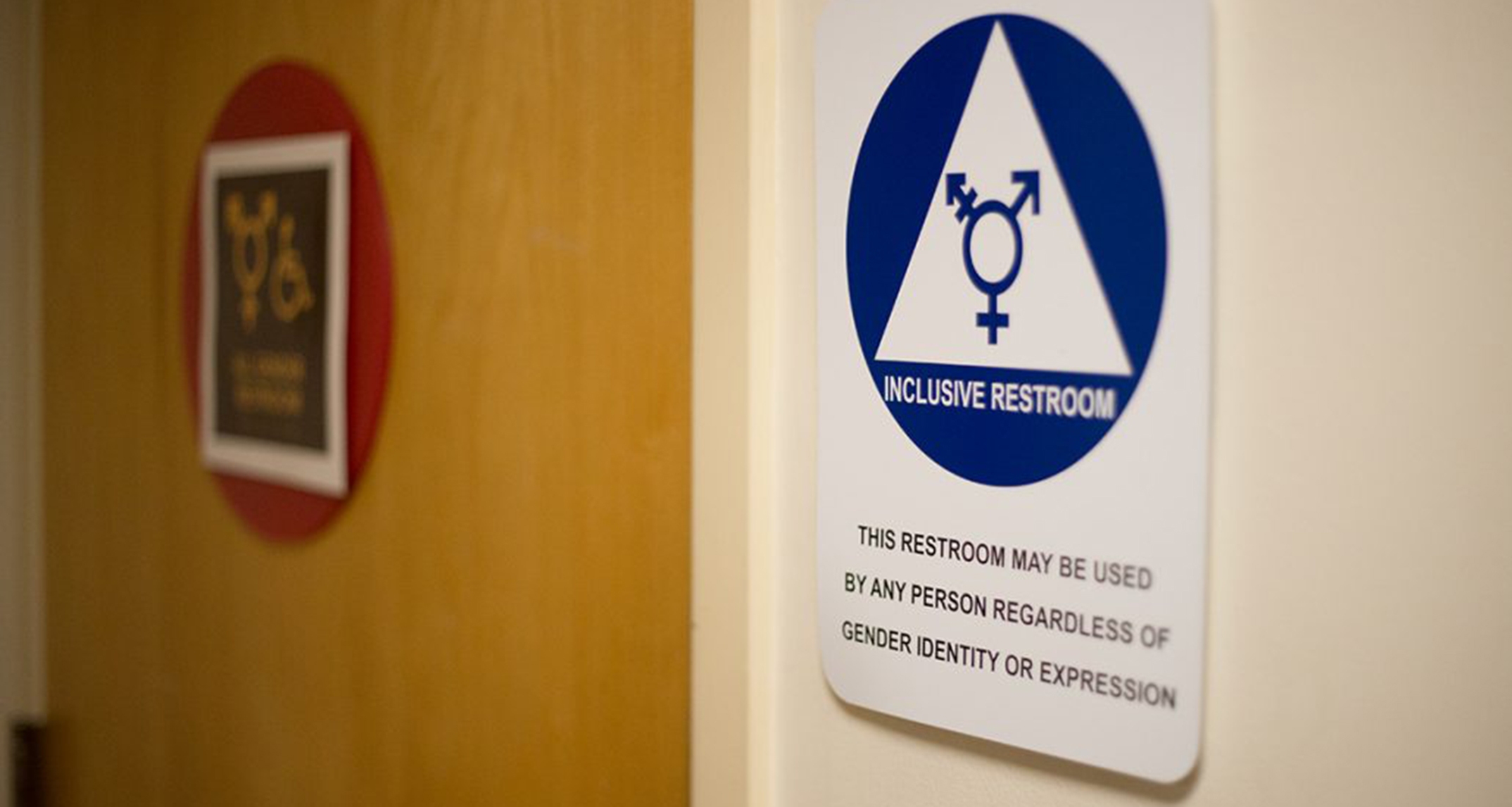Let’s Have A Conversation: How Can We Move Toward Gender- Expansive Facilities on College Campuses?


Source: HERI Diverse Learning Environments Survey 2017
In recent years, student affairs professionals have been focused on addressing transgender student rights on their campuses and in their communities more than ever before. Many institutions have autonomy over their own policies and practices, and we often get asked by our higher education clients, “how can we advocate for transgender students’ rights using architecture?”
One way campuses can advocate for trans students’ rights is by ensuring the availability of gender-inclusive housing options, bathrooms, and locker rooms. But what is the best way to go about this? Are there rules, guidelines or regulations that help architects and institutions? What building codes and requirements hinder us? In the absence of a true precedent, we embarked on a journey to better understand the many voices and stories that make up the transgender experience and further answer the needs of our higher education clients.
Educating Ourselves
As an architecture firm that understands the importance of how an individual experiences the buildings we design, we strive to deeply understand our end users and how the spaces we create may impact them. In the higher education world, this includes educating ourselves on current issues that students and universities face and developing solutions that the built environment can support. When we started researching best practices for designing a gender-expansive campus, we found that these guidelines do not yet exist. Although many schools have made steps toward providing facilities for transgender students, they often end up offering Band-Aid solutions that do not always effectively meet the needs of those students. So, to gain a better understanding of the current issues and barriers that transgender students face on a college campus, we reached out to Michael Kuffel, a mental health professional that works with transgender teens and adults.
For transgender students, “invisibility is their existence; that’s just the status quo,” said Kuffel. Some colleges do not address transgender needs in their resident life policies at all. We were shocked to learn from him that transgender lifetime suicide attempts vastly exceed the overall U.S. population’s attempts, 41 percent versus 4.6 percent. And when compared to reported suicide attempts by lesbian, gay, and bisexual adults, transgender reported suicide attempts are 10-20 percent higher.

Source: HERI Diverse Learning Environments Survey 2017
The precise use of terms in regards to gender can have a
significant impact on demystifying many of the misperceptions associated with
gender. That said, the vocabulary of gender continues to evolve and there is no
universal agreement about the definitions of many terms. Nonetheless, here are
some commonly used terms and corresponding definitions. Agender – A person who sees themselves as not having a gender. Cisgender – Refers to people whose gender identity aligns with their
assigned sex at birth. Gender Binary – A system that constructs gender
according to two discrete and opposite categories: boy/man and girl/woman. It
is important to note that both cisgender and transgender people can have a
gender identity that is binary. Gender Fluid – People who have a gender or genders
that change. Gender fluid people move between genders, experiencing their
gender as something dynamic and changing, rather than static. Gender Neutral – Not referring to either sex, but
only to people in general. Genderqueer – Is an umbrella term to describe
someone who doesn’t identify with conventional gender identities, roles,
expressions and/or expectations. For some, genderqueer is a non-binary
identification, and for others it is not. Non-binary – An umbrella term for gender identity
that is not exclusively either boy/man or girl/woman. Transgender – Sometimes this term is used broadly
as an umbrella term to describe anyone whose gender identity differs from their
assigned birth sex. It is also used more narrowly as a gender identity that
reflects a binary gender identity that is “opposite” or “across from” the sex
they were assigned at birth.
Transgender Students on College Campuses
It is well-documented that students thrive in environments free of the negativity of discrimination, where inclusion and respect for diversity is the daily norm.

San Diego State University Students held a demonstration to advocate for gender neutral bathrooms across campus. Image courtesy of Planet Transgender
Knowing that many students who identify as transgender feel invisible on a college campus, or conversely, “outed” by a well-meaning, but poorly executed design, and that this population has a significantly higher prevalence of reported suicide attempts, it is extremely important for higher education institutions to create a campus that is inclusive and safe for all students. Creating inclusivity by offering adequate facilities is one step toward meeting a university’s desire to advocate for transgender students’ rights.
A 2015 study, “A Critical Narrative Inquiry of Gender Inclusive Housing as an Emerging Practice,” funded by the ACUHO-I Research Grant program examined the critical question: “What does it mean to create a truly gender-expansive residential life program?” The study identified four major themes:
- Students describe gender-inclusive housing (GIH) as “better than most” other options. For the most part the experience of GIH is positive. But it is likely that many housing officials and architects would agree, “better than most” is not the goal. We want students to be excited and feel like GIH is giving them exactly what they need.
- Accessing GIH is challenging. Transgender students do not always know about the existence of GIH or how to go about accessing it. Information on housing department websites is often buried several clicks down, and its location isn’t necessarily intuitive for students (e.g., placing it under themed housing makes sense for housing professionals but not for students).
- GIH is not designed explicitly for transgender student needs and concerns. In general, the GIH housing originates from the activism of transgender students but is often now perceived of (and marketed as) a resource for all students. While there are some benefits of this approach, the potential cost is that the focus shifts away from transgender safety and empowerment. And, as a result, university housing communities become less focused, less identity-based, and less responsive to the needs of transgender students. Specifically, without a mechanism for screening participants in GIH, students may encounter transphobic peers who can compromise their sense of safety and belonging.
- RA and professional staff training in transgender identities and needs is minimal or non-existent. Transgender students reported that their RA and/or housing staff, while typically kind and welcoming, did not understand their gender identity, and more specifically, did not appear to have any training or special knowledge about creating gender-inclusive spaces. Thus, if an institution desires to have GIH, it would be important to ensure that RAs and other professional staff have the training and understanding about how to most effectively utilize the spaces in order to support the GIH.
Current Barriers
To date, designing for the comfort of cisgender students has been the priority. This is sometimes communicated overtly, but more often than not, it’s the insidious nature of nonverbal communication that erodes an institution’s efforts to build a culture of inclusivity and non-discrimination. Take for example this common occurrence: many colleges and universities abstain from posting a clearly stated policy on gender-inclusive housing and request instead that students contact their campus housing department if they need “special accommodations.” Failing to directly address a student population’s needs and then referring to those needs as “accommodations” sends an unintentional message that their comfort and safety is not a priority. From an architectural standpoint, these are some of the current barriers we’ve identified:
- Archaic and Binary Language/Signage: Although we live in the 21st century, our language and signage have failed to evolve. Language still falls into the binary classifications of male and female, making it unwelcoming to people who do not identify as either sex or identify as a sex that does not match a biological reference. And bathroom signage norms are still male stick figures wearing pants and female stick figures wearing skirts.
- Building Codes: The 2018 IPC edition (Section 2902.1.2 in the 2018 International Building Code) added the following language: “Single-user toilet facilities and bathing rooms, and family or assisted-use toilet and bathing rooms shall be identified for use by either sex." This provides the opportunity for architects and designers to make single-user toilet facilities that don’t have to assign to a certain sex. While building codes appear to be slowly evolving, they still maintain binary gender requirements for multi-user, public facilities. For example, Section 2902.2 states: “Where plumbing fixtures are required, separate facilities shall be provided for each sex.” Additionally, IBC 2902.4 reads: “Required public facilities shall be provided with signs that designate the sex as required by Section 2902.2.” We interpret this to mean that buildings governed by the IBC must have separate facilities that are assigned to either male or female. The implication is that, even if a school wanted to provide multi-user gender-neutral signed facilities, they would be violating the International Building Code.
- Segregation: Most universities have tried to create parity by providing separate restrooms for transgender students. By doing so they could be inadvertently suggesting a classification of male, female, and “other.” Although intentions may be good, what is actually implemented is segregation. Rather than promoting a sense of equality and inclusivity, it can cause transgender students to be singled out under the classification of “other,” or can create an undesired “outing” experience for them.

In 2017, the University of Southern California introduced the first multi-stall restroom that allows students of all gender identities in their Student Union Building. Image Courtesy of Trevor Sochocki, The Daily Trojan
Invitation – Will You Join Us?
We acknowledge there are still considerable steps that need to be made to meet the needs of universities that wish to create truly inclusive campuses. However, by continuing to educate ourselves and explore ways to empower our designs with a greater understanding of the actual needs of those we serve, we can help institutions move beyond the physical limitations of space to accommodate a diverse student population.
When asked how we can better understand transgender students’ needs and experience, Kuffel’s answer was simple: “By reaching out to them and having the conversation.” It is absolutely crucial to continue this dialogue, and we want you to be a part of it. Meet us at the (virtual) drawing table and let us provide a safe, hospitable environment to discuss the challenges encountered when creating a gender-expansive campus.
By continuing the conversation, together we can identify and overcome obstacles and influence our designs to create college campuses that are inclusive for everyone. Help us be part of the solution.
References
Sutton, Halley. 2016. "Transgender college students more at risk for suicide when denied bathroom, housing rights." Campus Security Report 13, no. 2: 9. Education Research Complete, EBSCOhost (accessed June 29, 2018).
Haas, A. P. (2014). Suicide Attempts Among Transgender and Gender Non-Conforming Adults. American Foundation for Suicide Prevention. Retrieved July 11, 2018, from Retrieved July 11, 2018, from https://williamsinstitute.law.ucla.edu/wp-content/uploads/AFSP-Williams-Suicide-Report-Final.pdf.
